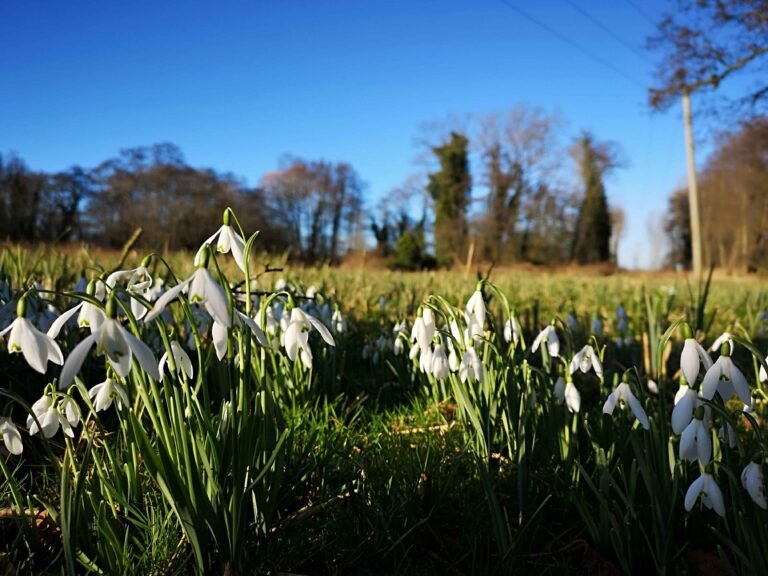10 Enchanting Ruins & Churches in Norfolk
Norfolk’s landscape is dotted with beautiful remnants of its rich history, from crumbling castle walls to abandoned churches shrouded in folklore and reclaimed by nature. These overseers of the past offer an enchanting and grounding glimpse into the county’s heritage and provide atmospheric settings for exploration. Today, in the first article in this series, we’ll uncover 10 of Norfolk’s most enchanting ruins and churches, each with its own unique story to tell.

St George’s Church Ruins, Hindolveston, Norfolk
Nestled in the quiet village of Hindolveston, the ruins of St George’s Church stand as a poignant reminder of Norfolk’s medieval past. This 14th-century church fell into disrepair in the 18th century, with only its tower remaining largely intact today. The ruins exude a haunting beauty, with ivy-clad walls and wildflowers growing amidst the ancient stonework. The tower, which once housed three bells, now provides a home for nesting birds and bats.
Historical highlight: Look for the remains of the 15th-century porch, which still bears traces of its original flint flushwork decoration. It can be difficult to work out from viewing the ruin if the vast carpet of ivy is slowly pulling the tower down, or holding it up, but it’s most definitely worth a stroll around all sides of the tower to consider this for yourself – particularly as the furthest side which is more hidden and remarkably beautiful.
Nearby attraction: After exploring the ruins, take a short drive to the charming market town of Holt, known for its Georgian architecture, and independent shops like the amazing Byfords which offer all manner of tasty delights. Alternatively, if you’re looking to stay in the area as part of a holiday, the other church in Hindolveston (built from reclaimed stone from the ruined St. George’s) offers the chance to try “champing”. This is inexpensive overnight camping in a church as is a must try at least once in your life. Check out the Champing.co.uk website for details of Hindovleston and others in your area.
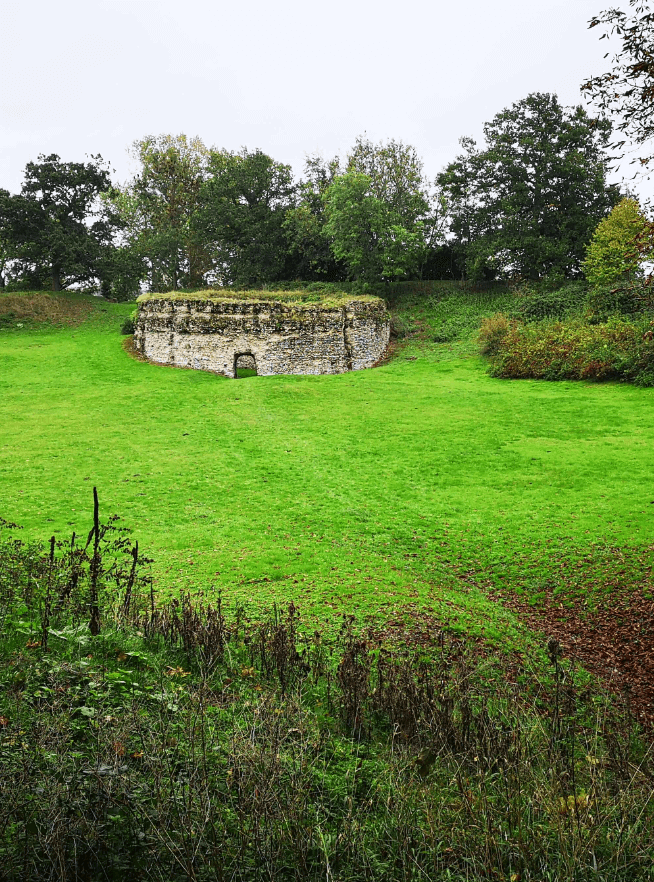
Castle Ruins, New Buckenham, Norfolk
The ruins of New Buckenham Castle offer a unique and relatively unknown glimpse into Norfolk’s Norman past. Built in the 12th century by William d’Albini, this motte and bailey castle was once one of the most impressive fortifications in East Anglia. Today, visitors to this friendly village can pick up the key to the castle grounds from the village shop. With this in hand, you are free to explore the substantial earthworks, including the impressive motte (castle mound) and parts of the stone keep. The site provides panoramic views of the surrounding countryside, giving a sense of the castle’s strategic importance. A word of warning, some of the paths around the higher parts of the castle grounds are tricky to climb and full of tripping hazards like tree roots exposed over the years, so tread carefully.
Historical highlight: The castle’s unique d-shaped keep was an innovative design for its time, offering better defence against siege engines. The village of New Buckehman itself was also a planned town and its current-day road plan, market cross and whipping post hint at activities that once happened here.
Nearby attraction: Visit the nearby King’s Head pub in New Buckenham village for a well-earned refreshment after your castle exploration – truly one of the best roasts around. Alternatively, venture the footpaths for Old Buckehham to see the Aviation Museum or, if visiting on a Tuesday, check out the hundreds of classic motorcycles that gather for Two-Wheel Tuesday outside the Ox & Plough. Bikes gather, when the weather is good, on one of the UK’s largest village greens, just outside the Ox & Plough.
St Andrew’s Church Ruins, Covehithe, Suffolk
Located in Suffolk rather than Norfolk, this ruin is found just off the side of a rapidly eroding coastal road called Mill Lane. Visitors will see many warning signs about the quickly eroding Covehithe land as it is vanishing at a staggering 4.5m per year with the village (and ruins) expected to have completely been claimed by the sea over the next 100 years. This eerie fact makes a visit here one of the most thought-provoking in East Anglia. The grand ruins of St Andrew’s Church at Covehithe hauntingly hang over the modest 17th-century church created within – a very special place.
Historical highlight: The original church exceeded what the coffers for the small parish had for upkeep. This prompted, in turn, the unique construction of the smaller church within its walls in 1672.
Nearby attraction: Take a walk along the nearby beach to see the skeletal remains of trees emerging from the sand, victims of coastal erosion. The Benacre National Nature Reserve (which is signposted) offers views of heathlands that are home to woodlark, wheatear and hobby. Turns are also popular visitors to these shores.
Baconsthorpe Castle, Norfolk
Stepping back into the Norfolk countryside, Baconsthorpe Castle tells the story of the rise and fall of a prominent Norfolk family. Built by the ambitious Heydon family in the 15th century, the castle grew from a fortified manor house that protected a fearful and ambitious lawyer with many enemies into a Tudor country home for sheep farmer descendants, complete with a deer park.
Today, visitors arriving to explore this Norfolk treasure can park in a gravelled area and enter via the immense ruined gatehouse to explore the evocative ruins. The peaceful setting belies the castle’s turbulent history, which saw it besieged during the Civil War and eventually dismantled stone by stone to pay off debts. There is ongoing work to conserve the structure, so it’s worth checking the English Heritage website for updates on access to the site before travelling.
Historical highlight: Look for the remains of the wool processing facilities, a testament to the source of the Heydon family’s wealth.
Nearby attraction: The nearby village of Edgefield offers an amazing nearby eatery in the form of The Pigs. A gastronomic treat with tasty pork dishes, amazing desserts and a top-notch array of spa packages and relaxation suites – they’re a huge Instagram destination right now!
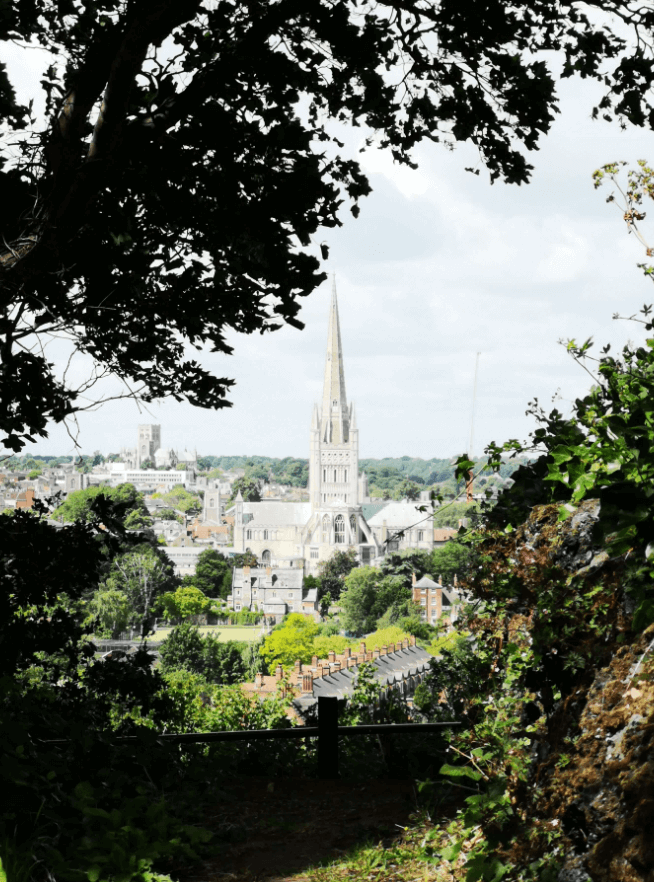
Kett’s Heights (Chapel of St. Michael), Norwich, Norfolk
Perched on a hill overlooking Norwich, Kett’s Heights is often overlooked or passed by locals and visitors alike without them even knowing it is there. The site offers both a historical escapade and stunning panoramic views over the city and its cathedral spire. The easiest access is from Kett’s Hill via a small break in the imposing wall where you’ll find some iron gates. A short stroll through the woods and the site will open up on the hilltop to reveal the ruins of the Chapel of St. Michael, dating back to the 13th century.
The area gained its name from Robert Kett, leader of Kett’s Rebellion in 1549. It was from this vantage point that Kett and his followers planned their assault on Norwich Castle. The chapel ruins are maintained in a thoughtful way with herb gardens and flower beds woven within the former walls.
Historical highlight: The chapel’s walls were originally made with lime and mortar, over the years these have slowly been repaired and replaced with inflexible modern concrete. Since concrete is not a “breathable” material, this leads to cracking. The immense conservation efforts by the community that maintains Kett’s Heights have remedied this by training individuals in the use of lime and mortar techniques and using the historic craft to repair the site both sensitively and securely.
Nearby attraction: Keen explorers may wish to talk the short walk from the gates at Kett’s Heights down to Bishopsgate which will give access to the Cathedral Quarter, riverside walks around the 14th Century Cow Tower and possibly even a pint at the historic Adam & Eve pub set in a former monastery brew house.
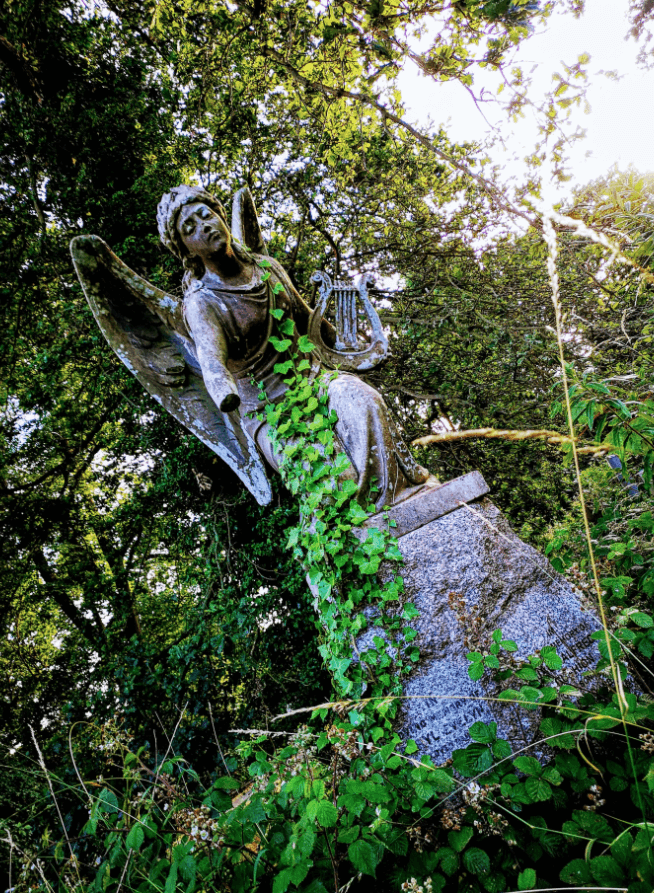
Rosary Road Cemetery, Norwich
While not a ruin in the traditional sense, Rosary Road Cemetery in Norwich offers a hauntingly beautiful exploration of the city’s Victorian past. Opened in 1819, this non-denominational burial ground shows how acceptance of differing beliefs and faith can give way to the creation of something beautiful. It’s one of the earliest examples of a garden cemetery in England and has taken on a somewhat poetic character. Ornate gravestones, historic sarcophagi and crumbling monuments peek out from among the vegetation creating a contemplative and informative walk.
Historical highlight: Thomas Drummond commissioned the cemetery at a time when many non-conformist faiths were being turned away from burials in church grounds. The site allowed those with or without faith or belief to have a respectful place to celebrate what made their loved ones unique and special. Jeremiah Colman and John Jarrold are among the graves of famous Norfolk folk to look out for. Also worth noting is the grave of John Barker, a local hero who saved 25 lives from drowning in the River Wensum.
Nearby attraction: The nearby Lion Wood offers another outdoor exploit in its nature reserve and a couple of roads away sits the amazing Fat Cat and Canary – a local treasure of a pub with welcoming staff and a long history itself.
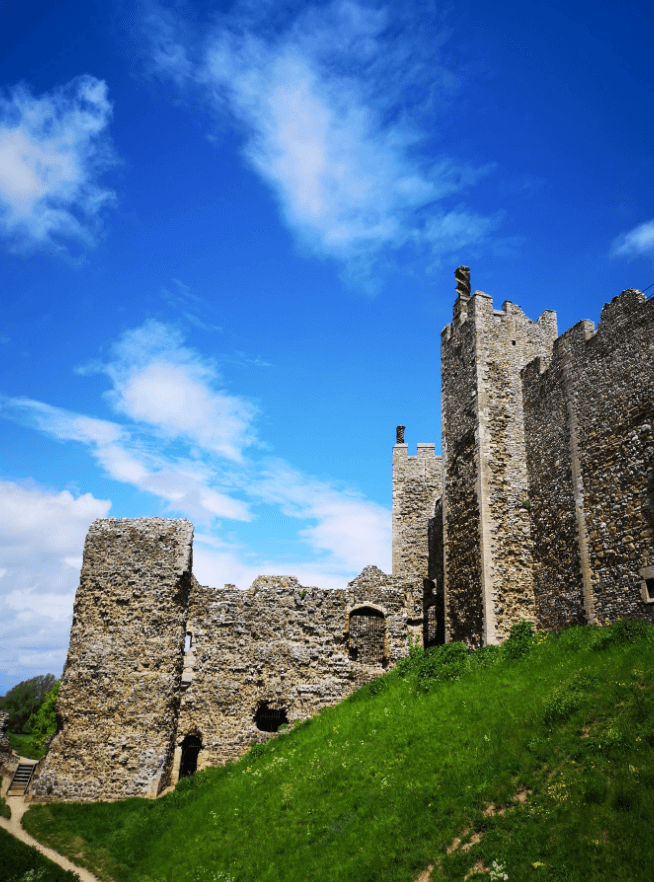
Framlingham Castle, Suffolk
While technically just over the border in Suffolk, Framlingham Castle is too impressive to leave off this list of ruins and relics in The East. This 12th-century fortress, made famous in Ed Sheeran’s “Castle on the Hill” hit song, provides a striking curtain wall and 13 towers to explore and walk around. The site offers a rare glimpse into medieval military architecture and regularly holds themed days throughout the year for families and education. Visitors can enjoy panoramic views of the Suffolk countryside if they take the steps to the upper levels of the walls.
Historical highlight: Framlingham Castle was where Mary Tudor was proclaimed Queen of England in 1553. There’s also a workshop and visitor centre on the site for learning more about the castle’s past.
Nearby attraction: The market town of Framlingham itself is worth exploring, with its historic buildings and excellent local pubs. Particular highlights we recommend are the Castle Inn, Ed Sheran’s hang-out that is complete with memorabilia of the singer, and Watson & Walpole – the most delightful and intimate Italian restaurant run by the hospitality powerhouse that is Ruth Watson.
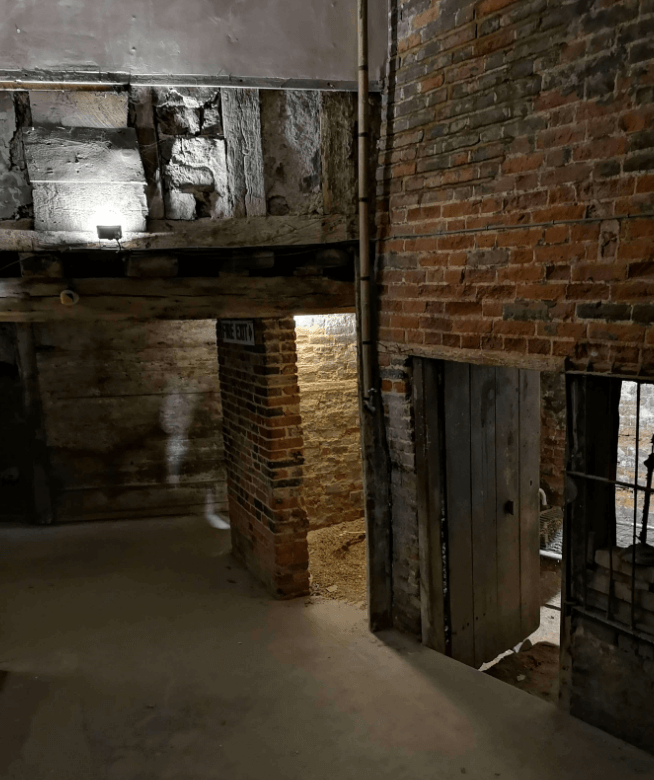
Hidden Street under Norwich
Deep beneath the bus lanes that surround Norwich Castle lurk the hidden streets of days long gone. This subterranean world, accessible through Shoebox Experiences, reveals a preserved medieval street complete with shopfronts and cobblestones. To evolution of the landscape, with digging and mounding up, gave way to the streets being lost until recent years. Walking through this underground time capsule provides a tangible connection to Norwich’s medieval inhabitants and their daily lives and the meandering corridors challenge visitors to keep their bearings with what is above their heads in the modern-day Norwich.
Historical highlight: The tour available here at £15 for adults offers immense insight into the use of the streets and buildings along with the lives of those living or working in them. Shoebox Experiences offers their guests a range of tours around Norwich so it is well worth checking out the variety they have on offer elsewhere. They’re a great non-profit setup worth supporting if you can.
Nearby attraction: After your underground adventure, explore Norwich Castle Museum, which offers additional insights into the city’s rich history or check out the Cosy Club (in an iconic vaulted bank building) located near the exit to the tour. Alternatively, on a hot day, grab a gelato round the corner from Cafe Gelato on Opie Street – Italian authenticity!
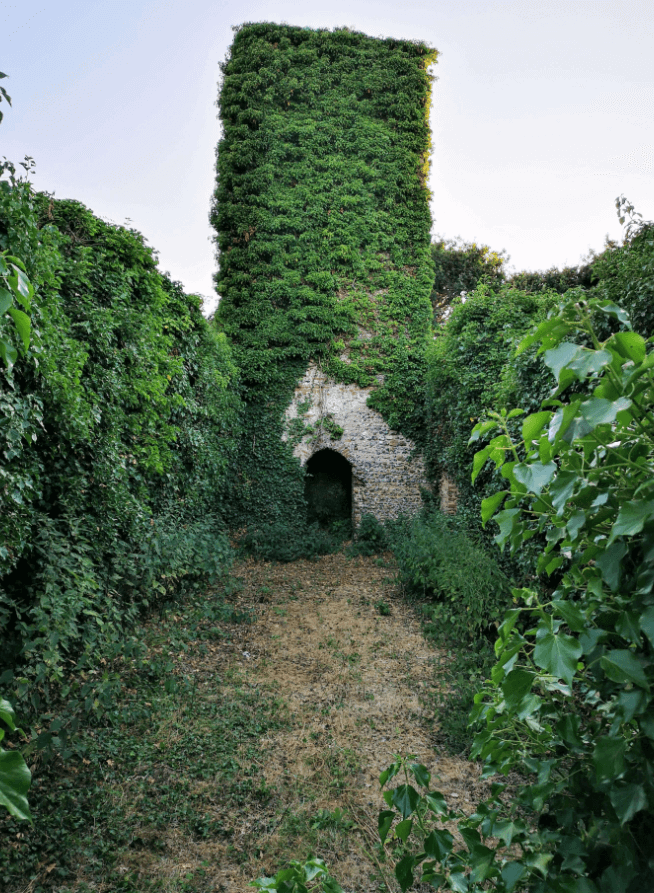
St. Edmund’s Church Ruins, Southwood
Way off the beaten track in the Norfolk countryside near Southwood, the ruins of St. Edmund’s Church offer a solitary and quiet ruin to visit. This site holds a presence and stillness unique to a ruin so far from bustling streets and traffic. Visitors will likely not encounter another human while here and the silence allows the ruin, and nature, to tell their story without interruption. This 14th-century church fell into disuse in the 16th century during the Reformation and has since been slowly reclaimed by ivy and elder which encircles the tower’s remains. The site is particularly atmospheric in spring when wildflowers, including bluebells, carpet the ground around the ruins.
Historical highlight: Look for the remains of the 14th-century tracery in the window openings, which hint at the church’s former grandeur. The bell tower is marked with a cautionary notice about falling masonry but remains the focal point of this ruin.
Nearby attraction: After exploring the ruins, take a short drive to the RSPB nature reserve at Strumpshaw Fen or the nearby Buckenham Woods to explore a remote woodland popular with those seeking sites with bluebells in Norfolk.

St. Mary’s Church Ruins, East Somerton
Hidden in a woodland near Norfolk’s coastline, the ruins of St. Mary’s Church in East Somerton are steeped in local folklore. The roofless walls of this 15th-century church create a hauntingly beautiful scene, with trees growing within the nave. Legend has it that a witch was buried under the altar with an oak tree planted through her heart. The tree that now grows within the church ruins is said to be this very oak. We first learnt of this ruin many years ago thanks to the amazing Atlas Obscura website.
Historical highlight: For an interesting comparison of engineering from the past and present. Take a drive up to the nearby wind turbines at East Somerton. They are accessed via some tiny roads but when up close to these colossal marvels it’s easy to appreciate engineering at all levels – be it church or turbine.
Nearby attraction: The nearby Horsey Windpump, managed by the National Trust, offers some great views or there’s always a trip further East to the beaches at Winterton.
Whether it’s crumbling castles to abandoned churches reclaimed by nature you’re after, Norfolk’s ruins offer a captivating journey through the county’s rich history. We’ve found that each site tells its own unique story, inviting visitors to step back in time and imagine the lives of those who came before.
It does matter if you’re a history enthusiast, a photography lover, or simply seeking atmospheric locations off the beaten path, we encourage you to get out there and explore. We’d love to hear from readers about other sites in Norfolk and Suffolk too, so pack your camera, don your walking boots, and send us some photos or comments about your trips!




